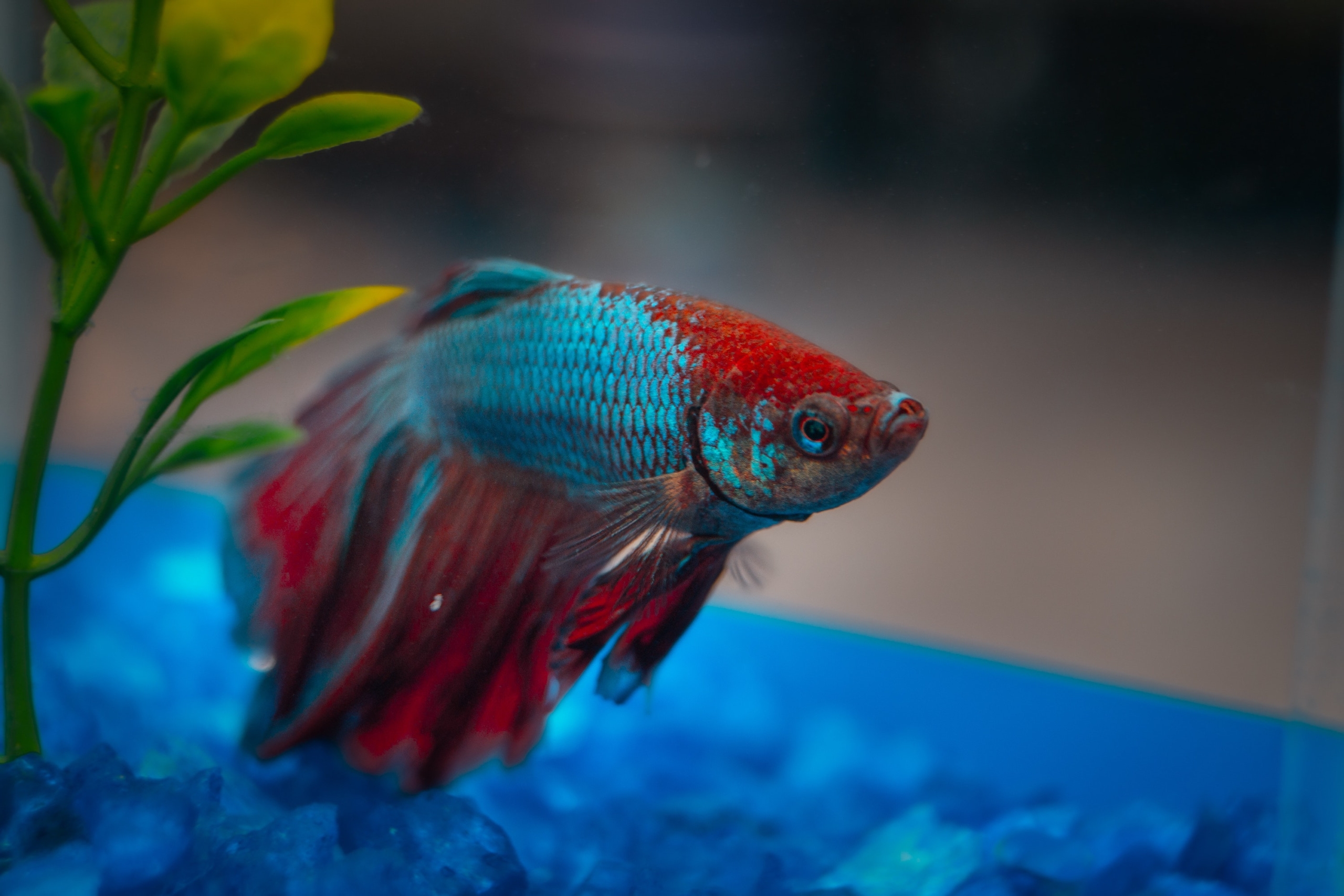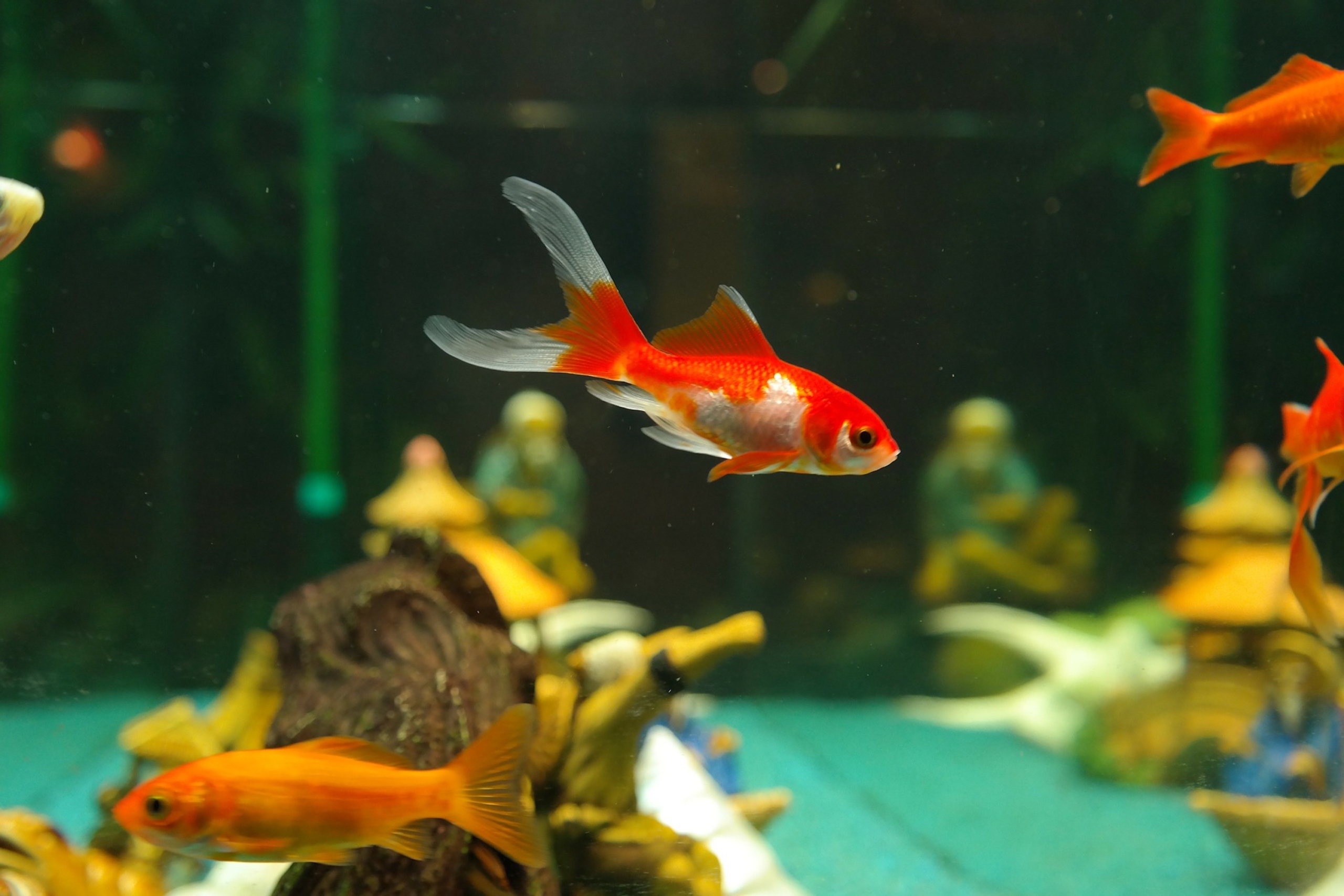Fish are known for being fairly low maintenance compared to other pets, but owners have begun to wonder whether low maintenance has to mean fewer interactions as well. With most pets, you can bond simply by petting them or spending some time together. With fish, however, you have glass and water separating you, so bonding doesn’t come quite as easily.
Tank decorations, such as castles, bubblers, and even backgrounds, give fish new textures to explore and places to hide, which can be fun to watch from a person’s perspective. Past looking (and purchasing adorable aquarium decorations), though, there’s not much you can do to interact with your pet fish. Is there?
Are fish trainable?
Surprisingly, you can train your betta fish and goldfish, including other common pet fish varieties. Like a lot of animals, they’re food-motivated, so make sure to take advantage of their mealtimes to sneak in some training time as well. Libby Eyre, a marine trainer at Sea Life Sydney Aquarium in Australia, told the Daily Telegraph that it takes only minutes a day to train a goldfish: “If you feed them in the same location in the aquarium, they will know to go there for food,” she explains.

As it turns out, the myth that a goldfish’s memory lasts about three seconds is completely wrong. An Australian schoolboy tested this theory firsthand by dropping a red Lego into his fish tank and immediately sprinkling food around it. In time, his fish learned to associate the Lego with food and would swim toward it when it was dropped in the tank. Once this behavior was learned, it was time to test the real theory. The boy waited a week before using the Lego again, and, as if no time had passed, his fish swam toward it in anticipation of food.
Experiments like these prove that, like most pets, goldfish have the ability to remember learned behaviors. This is just the first step toward all kinds of fish-owner interaction, though. Before you know it, your fish will be jumping through hoops, literally! Here is how to train a goldfish:
How to train a fish
Just like training any animal, you’ll be taking baby steps toward your ultimate goal. So, while you might envision your goldfish weaving through poles like a pro, it will take some time before you get there. Eyre explains that the first step in fish training is to reward your fish for swimming to a certain location. This is when your fish’s favorite food comes in handy, but be very careful not to overfeed your aquatic friend.
Once your fish learns to swim to a specific spot in the tank, reward him for following to another part of the tank. This is step two, and it might be made easier with the help of a training wand or some kind of distinguishable item for your fish to follow. Remember to be consistent so as not to confuse your fish; use the same item or training wand every time, and don’t skip out on rewards when your fish does what you want them to do. Eyre reminds readers to reward your fish as soon as they perform the desired behavior so it will be clear what you want from them.

Training kits such as the R2 Fish School Kit help you take goldfish training to the next level with hoops, wands, and all kinds of fun accessories. One particularly useful tool is its targeted feeding wand, which releases food instantaneously, keeping your fish engaged and excited to learn. Its mini-sized sports field can be set up to teach your fish to push a tiny soccer ball into the net, to swim through a goal post like a football, or even to use as a short slalom course for more agile swimmers.
No matter how you train your fish, use positive reinforcement to encourage your fish to repeat the desired behavior. Animal trainer Johnny May used this technique, combining baby steps with rewarded behavior, on white sturgeon, which are large anadromous (which means they thrive in both salt and freshwater) fish measuring up to 20 feet. The desire for reward is universal — it’s not limited to species of fish. When an animal gets what they want, they’ll be more than satisfied to do what you want. There’s no secret to fish training, it’s just psychology here!
Editors' Recommendations
- What causes high pH in an aquarium? We’ll walk you through getting your tank levels in check
- 7 telltale signs of a dying hamster (and what you should do)
- What fish can live with bettas? These are your best bets for fish buddies
- Check these 3 things immediately if you have fish swimming at the top of the tank
- What you need to know about sugar gliders before you get an exotic pet




